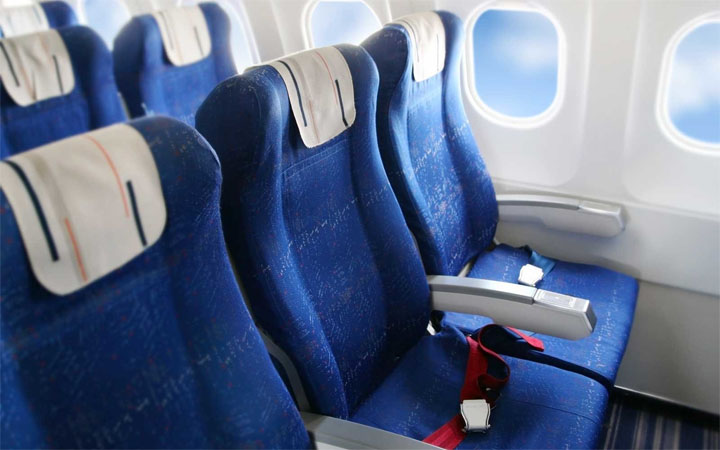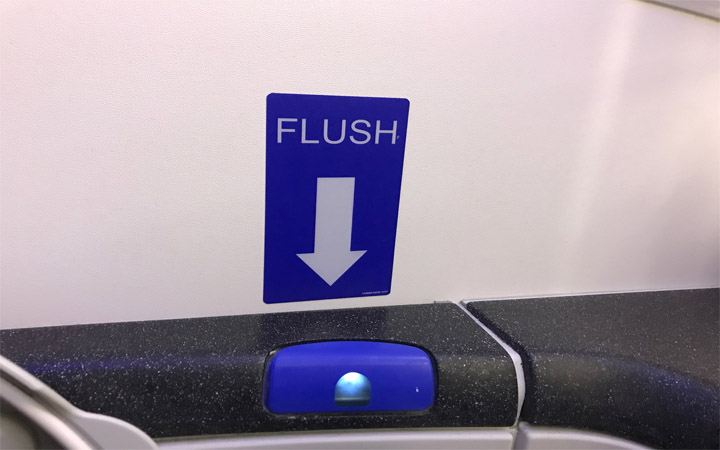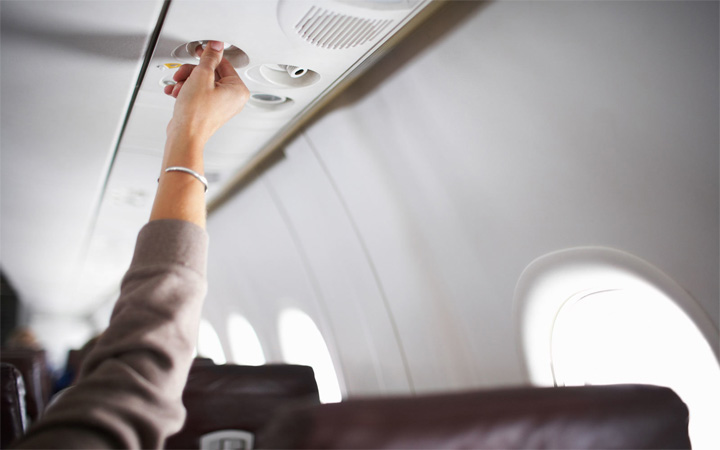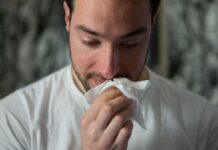Last Updated on January 7, 2021
This is why it is necessary to always keep a hand sanitizer with you to just clean your hands one more time when you go back to your seat.
Seat belt buckle
 ©Travel + Leisure
©Travel + Leisure
The results of this study put the seat belt buckles at number five, which is also a surprise since it doesn’t even cross our mind to consider it germy in the first place. But again, it makes sense!
One average buckle contains 1483 bacteria per square centimeter, which is not a small number. We don’t spend much time touching the seat belt, but it is still required to sanitize your hands after touching it.
Just remember how many people have been at your seat and touched the same buckle, especially after coming from the bathroom and touching that door lock without sanitizing.
Toilet Flusher
 ©BoardingArea
©BoardingArea
If you still believe that the number of bacteria located in a bathroom stall is a lot, then you should consider that again. According to the studies, the toilet flusher contains 1709 bacteria per square centimeter only in the toilet flusher.
In the airplane bathroom, or basically, any bathroom, make sure to always close the lid before flushing to avoid getting the bacteria spread everywhere around you (and on you!).
If you can flush the toilet with something other than your hands, do it. And always, always wash your hands and use the hand sanitizer. There are just way too many bacteria and you don’t want to risk it!
The ceiling’s air vent
 ©Travel + Leisure
©Travel + Leisure
At number three, the air vent of the plane was the one to proudly earn this position, and rationally thinking, these air vents above the passengers should be the cleanest places due to their role. But with 1838 bacteria per square centimeter, it is now considered as one of the germiest!
Luckily, these vents are way above us which makes them untouchable, but we still need to be a little careful and make sure to sanitize our hands before eating or even before touching a food item. The bacteria could still reach us somehow, but that’s when being overprotective of our health comes in handy.























